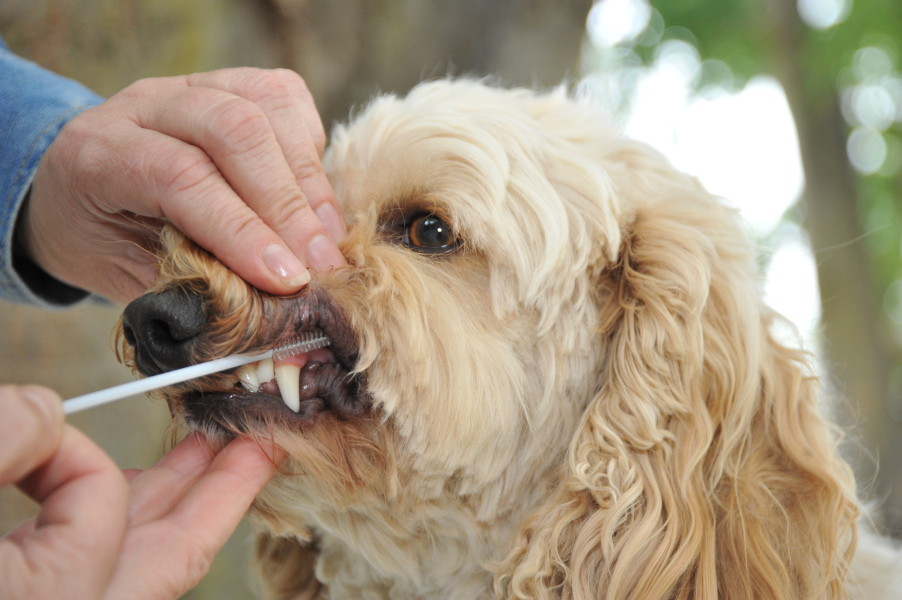Quick Summary
Click here for Price and Turnaround Time
Phenotype: A cleft palate is a birth defect whereby a hole (cleft) in the roof of the mouth (palate) develops in a puppy during gestation. Puppies born with cleft palate can experience difficulty nursing, which will greatly increase their risk of developing aspiration pneumonia, a serious life-threatening condition.
Mode of Inheritance: Autosomal recessive
Alleles: N = Normal, CP1 = Cleft palate (CP1 variant)
Breeds appropriate for testing: Nova Scotia Duck Tolling Retriever
Explanation of Results:
- Dogs with N/N genotype will not have this form of cleft palate and cannot transmit this CP1 cleft palate variant to their offspring.
- Dogs with N/CP1 genotype will not be affected by this form of cleft palate, but are carriers. They will transmit this CP1 cleft palate variant to 50% of their offspring. Matings between two carriers are predicted to produce 25% CP1 cleft palate-affected puppies.
- Dogs with CP1/CP1 genotype will have this form of cleft palate and will transmit this CP1 cleft palate variant to all of their offspring.
Results of this test can be submitted to the OFA (Orthopedic Foundation for Animals)
Nova Scotia Duck Tolling Retriever Health Panel
$140 per animal
Sample Collection
Dog DNA tests are carried out using cells brushed from your dog's cheeks and gums. The preferred cytology brushes are sent to you by mail, or you may provide your own brushes. For accepted alternative brushes, click here
We recommend waiting until puppies are at least three weeks old before testing.

Step-By-Step:
- Make sure the dog has not had anything to eat or drink for at least 1 hour prior to collecting sample.
- When swabbing puppies, isolate each puppy from the mother, littermates and any shared toys for 1 hour prior to swabbing. Puppies should not have nursed or eaten for 1 hour prior to collecting sample.
- If collecting samples from more than one dog, make sure to sample one dog at a time and wash your hands before swabbing another dog.
- Label brush sleeve with name or ID of dog to be sampled.
- Open brush sleeve by arrow and remove one brush by its handle.
- Place bristle head between the dog’s gums and cheek and press lightly on the outside of the cheek while rubbing or rotating the brush back and forth for 15 seconds.
- Wave the brush in the air for 20 seconds to air dry.
- Insert brush back into sleeve.
- Repeat steps 5 - 8 for each unused brush in sleeve on a fresh area of cheek and gums. Make sure to use and return all brushes sent by the VGL. In most cases, it will be 3 brushes per dog. If using interdental gum brushes, please note that the VGL requires 4 brushes per dog and only moderate or wide interdental gum brushes are accepted.
- Do not seal brushes in sleeve.
- Place all samples in an envelope and return to the address provided.
ATTENTION:
- Do not collect saliva/drool – the key to obtaining a good sample is getting cheek cells on the swab
- Do not rub swab on the dog’s tongue or teeth – this will result in poor quality sample
- Do not collect a sample from a puppy that has recently nursed – the mother’s genetic material can rub off on the puppy’s mouth and contaminate the sample
A cleft palate is a birth defect whereby a hole (cleft) in the roof of the mouth (palate) develops in a puppy during gestation. Puppies born with cleft palate can experience difficulty nursing which will greatly increase their risk of developing aspiration pneumonia, a serious life-threatening condition. There are multiple genetic causes of cleft palate within the Nova Scotia Duck Tolling Retriever breed; however, the most common form has been identified as CP1.
Researchers from the Bannasch Laboratory at the University of California, Davis discovered the genetic cause of CP1 cleft palate in the Nova Scotia Duck Tolling Retriever. Dogs with this form of cleft palate have a large insertion into a gene known to affect the proper development of the palate. This mutation is not present in any other breed based on testing conducted on over 300 individual animals of over 80 different dog breeds.
Cleft palate caused by CP1 is inherited as an autosomal recessive disease. Affected puppies inherit two mutant copies of this defective gene, one from each of their parents. Dogs that have 1 copy of the CP1 mutation (carriers) are completely normal and can be safely bred to N/N dogs in order to maintain diversity within the breed and select for other positive attributes in carrier dogs.
Breeders can use results from the test as a tool to select mating pairs to avoid producing affected dogs. At the time that this test was released, approximately 15% of Tollers were carriers of CP1 (N/CP1), and this mutation accounted for 62% of cleft puppies from North America.
